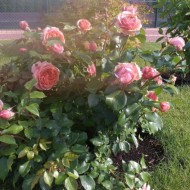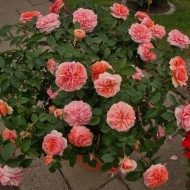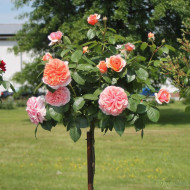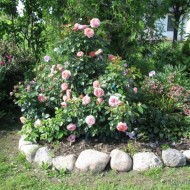Spectacular Chippendale Rose in Garden Design: Growing Guide
Content
Chippendale rose breeding history
The Chippendale variety was developed in 2005 by the German breeder Hans Jürgen Ewers, who became a co-owner of the Tantau company. The flower was named in honor of Thomas Chippendale, who was a cabinetmaker in the distant XIII century. He designed his works in the Rococo style, which is characterized by the presence of small details, and classicism. Often carved roses were adorned with finished products.
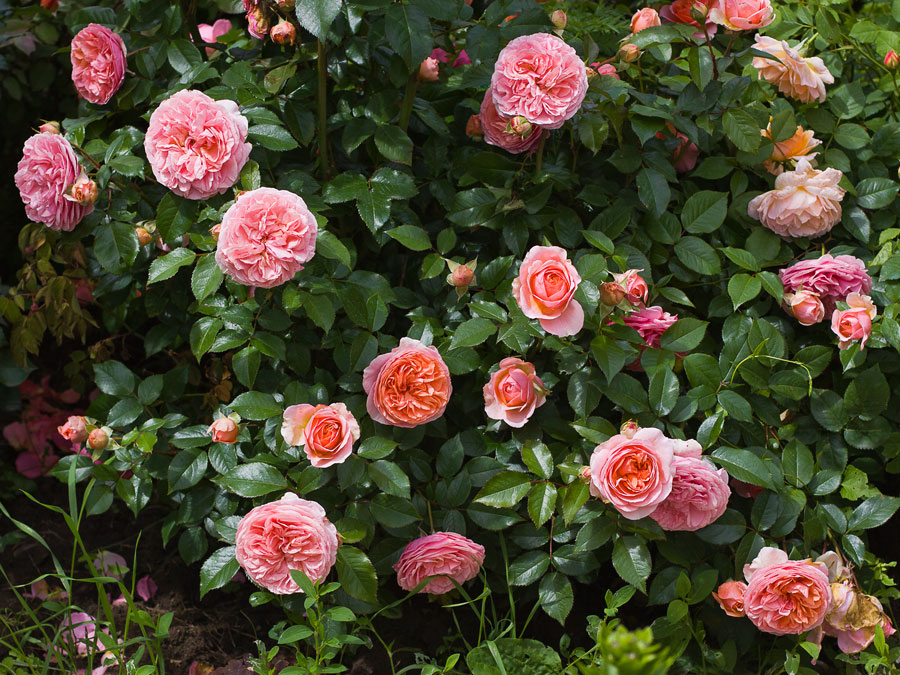
The name of the plant has nothing in common with the heroes of the cartoon "Chip and Dale". The rose code is Tan97159. Sometimes this variety is called Ali Man, Ali Mau. How to classify a flower, there is no exact solution. It is often referred to as scrubs - bushes. In the south, in nurseries, the variety belongs to the group of climbing roses, and the originator himself nostalgically calls his creation a hybrid tea plant.
Description and characteristics of the variety
The bush is strong, strong, not spreading. Reaches 120 cm in height, up to 100 cm in width. The foliage is medium-sized, glossy, with pointed tips. On the upper parts of the branches, 2-3 buds are formed.
The diameter of the blossoming flower reaches 12 cm. It has a cup-shaped shape, consists of numerous (up to 80 pieces) double petals, the color of which can be bright orange, apricot or pale pink. The rose has a fruity aroma. Flowering starts in early June. In warm regions, it lasts until November.
The variety is frost-resistant and tolerates frost down to -27 ° C, but in the middle lane, shelter is required for the winter. It keeps well during the exhausting heat, the flowers do not crumble due to prolonged rainfall.
The rose blooms twice a season, the second time more abundantly.
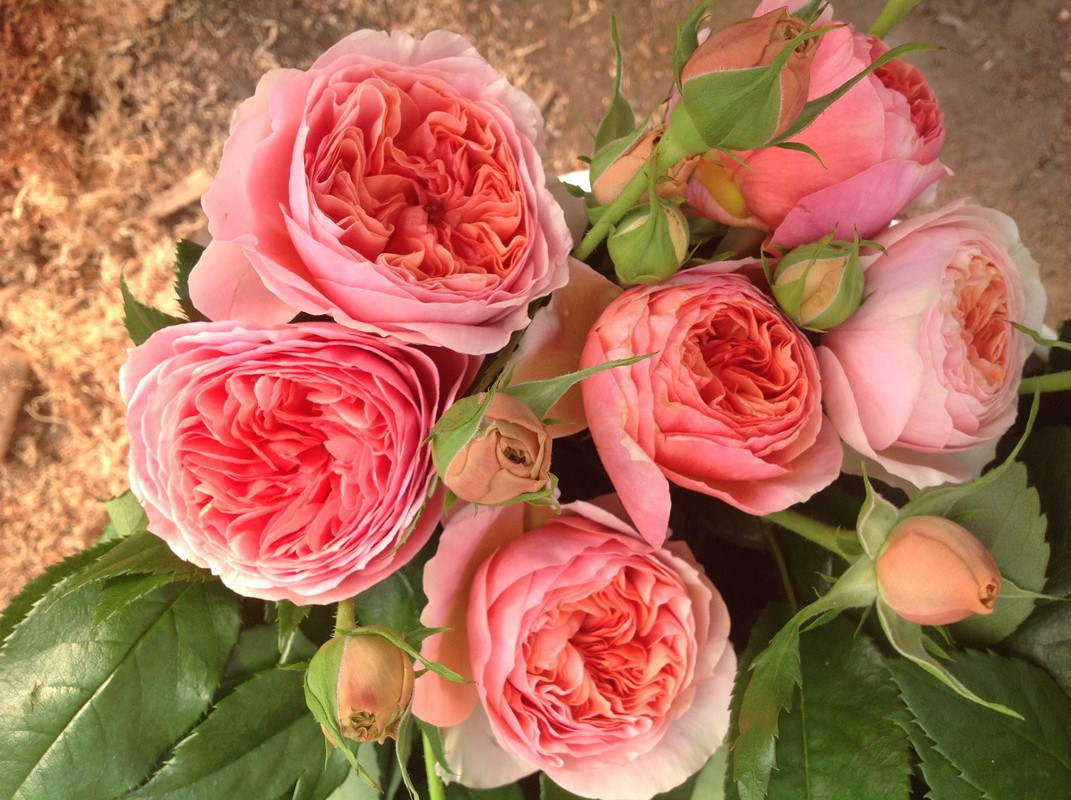
Pros and cons of culture
- unusual, pleasant aroma of flowers;
- good commercial qualities;
- resistance to adverse weather conditions;
- powdery mildew resistance.
- the only drawback of the plant is the small size of the flowers.
But this completely depends on the gardener, because the buds become smaller if the bush grows in a shaded area.
Video "Meet the Rose Chippendale"
This video provides a complete overview of horticultural crops.
Features of growing Chippendale roses
Landing rules
The rose is planted in well-lit areas. The shadow is allowed for a short time. The planting period falls in April - mid-May, depending on the climatic characteristics of the region. In clay and sandy soils, a hole for a seedling is made no smaller than 80 cm, it is filled with earth with the addition of organic matter. For better growth of the bush, drainage should be made from broken brick or gravel.
Landing is carried out in compliance with the following rules:
- shorten the upper shoots, leave 3-4 buds;
- remove weak growths;
- cut the roots and put the seedling in water with a growth biostimulant for one day;
- prepare a hole for a bush a week before planting;
- deepen the root collar of the plant by 10 cm;
- no more than 4–6 bushes are allowed per 1 m², so that they do not create shadows for each other;
- after planting, trample and water the earth.
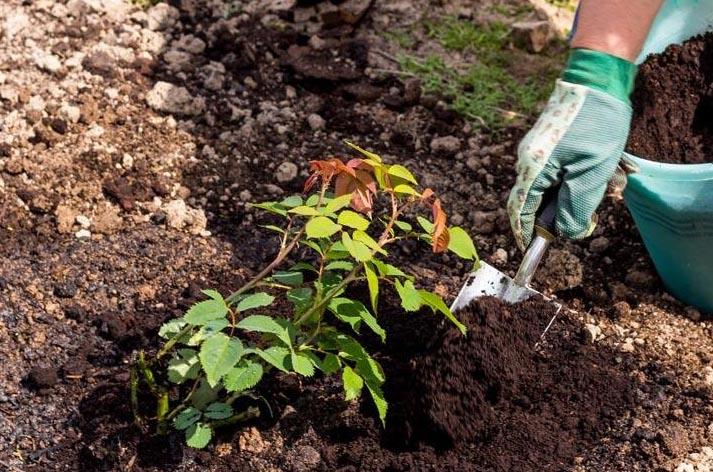
Reproduction methods
There are two methods of propagation of the Chippendale variety - by cuttings and layering. In the first case, the following actions are performed:
- the faded shoot is cut and divided into parts up to 20 cm long;
- the lower leaves of the cutting are cut off and stuck into the prepared soil to a depth of 6 cm;
- cover the seedlings with plastic wrap or cut plastic bottles;
- regularly water the cuttings, preventing the earth from drying out;
- after rooting and the beginning of growth of a new plant, it can be transplanted to the desired location.
The method of propagation by layering is safer for the parent plant. Its essence lies in the digging in of a part of a lateral strong branch, with the timely removal of the forming buds. This way the branch takes root without being cut from the bush. At the same time, it is important to ensure abundant watering for the layering.
Bush care
The abundant flowering that distinguishes the Chippendale variety depletes the bush. To prevent this from happening, you need to remove faded flowers in time and prune twice a year. Thin, damaged shoots should not be spared, and annual strong branches should be cut by 1/3. Only 2 buds are removed from biennial branches.
Watering is carried out in the evening, the abundance is regulated depending on weather conditions. On average, 10 liters of water are required once a week. In a drought, 2-3 waterings per week are allowed. Sprinkler and irrigation methods are used. Chippendale is a park rose and loves this kind of watering. In the autumn, watering is reduced. Each time after watering, the soil around the rose must be loosened and covered with mulch.
In the spring and during the period of bud formation, the bush is fed with mineral fertilizers. At the end of summer or at the beginning of autumn, a phosphorus-potassium mixture is introduced.
Preparing for winter
In September, the bush is fed with superphosphate and monophosphate. Before preparing for frost, the rose needs to be watered abundantly for the last time this year. This variety tolerates frost well, but not every gardener will risk the plant, especially in the middle lane.
To prevent the freezing of a rose, before the onset of frost, it is huddled 35 cm, and manure or compost from rotten leaves is spread between the rows. The bushes are covered with bags, straw or spruce paws. While the bushes are small, they can be divided into parts by folding the branches together and wrapped in burlap.

Disease and insect control
Chippendale can be affected by fungal diseases, rust. To eliminate this trouble, the bush should be treated with Bordeaux mixture or copper sulfate.
Of all the pests, this variety most often affects spider mites, aphids and rose sawfly. The insecticide "Iskra" will help get rid of the sawfly, and the aphids will be removed by laundry soap or special means, for example, "Aktellik", "Aktara".
The use of the Chippendale variety in landscape design
The Chippendale flower can be used for single planting or to create garden arrangements.
To maximize the potential of the variety, it is used to create stylized corners in the garden:
- planting near the gazebo, followed by weaving along the walls;
- the formation of arches and hedges;
- complementing the design with twisted benches or swings, to create an old romantic style.
- Solitary landing
- Growing in pots
- Growing on a scrub
- Flower bed
Florist reviews
“Propagated the rose by cuttings. Incredible color, simply captivating. Looks good next to catnip. "
“The color of this variety is a sight to behold. The bush is strong and strong, I am satisfied. "
The Chippendale rose variety is considered one of the most beautiful and unpretentious to care for. The culture multiplies easily and tolerates bad weather well. Abundant fragrant flowers of unusual color will transform any garden area.

